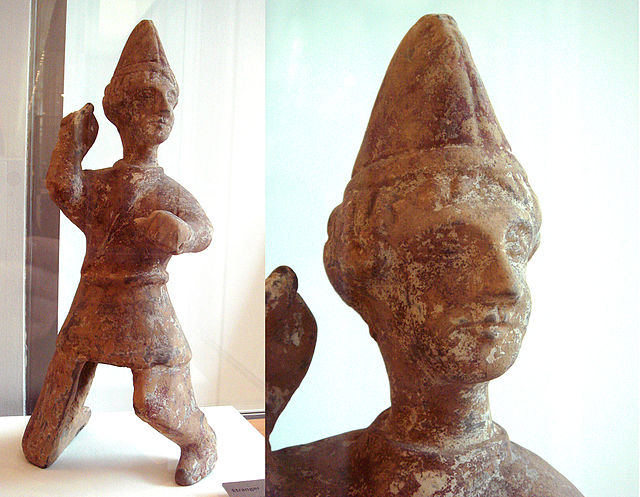Mili is a type of Chinese veil which originated from Hufu of the Rong and Yi people cultures. In the Sui to early Tang dynasties, the mili was typically to a body-long veil which was used to conceal the body of women; it was a form of burnoose which was burqua-like. The full-body mili then evolved into the weimao by the end of the Sui dynasty. The full-body mili continued to be worn in the Tang dynasty,but started to lose popularity by the middle of the 7th century. It eventually disappeared completely by 705 AD. Some Tang dynasty mili also only covered the women's face and neck areas.
A Tang dynasty lady holding a mili.
Female rider wearing a hood, similar to a balaclava, which only shows the face, Tang dynasty, late 7th to early 8th century.
Hufu, also referred as Hu clothing, nomadic dress, 'barbarian' clothing or dress, or foreign dress, is a generic term which refers to any clothing which was worn in ancient China and its surrounding regions by non-Han Chinese people. This term is also used to refer to clothing of foreign origins in ancient China. The introduction of Hufu-style garments and attire in China occurred by the time of King Wuling of Zhao.
A foreign Sogdian soldier wearing a curved collar (曲领) short robe, Eastern Han, early 3rd century.
Figurines from Northern Wei. On the left: Foreign fashion lapel robes On the right: Foreign-influenced or foreign-style cross-collared robes closing to the left side instead of the right side. Traditionally, Chinese style upper garment closes to the right.
Some paintings of the Ming dynasty depicts the Han Chinese with zuoren clothing, an atypical feature
Xiongnu leather robe closing to the left side (zuoren), Han period.






